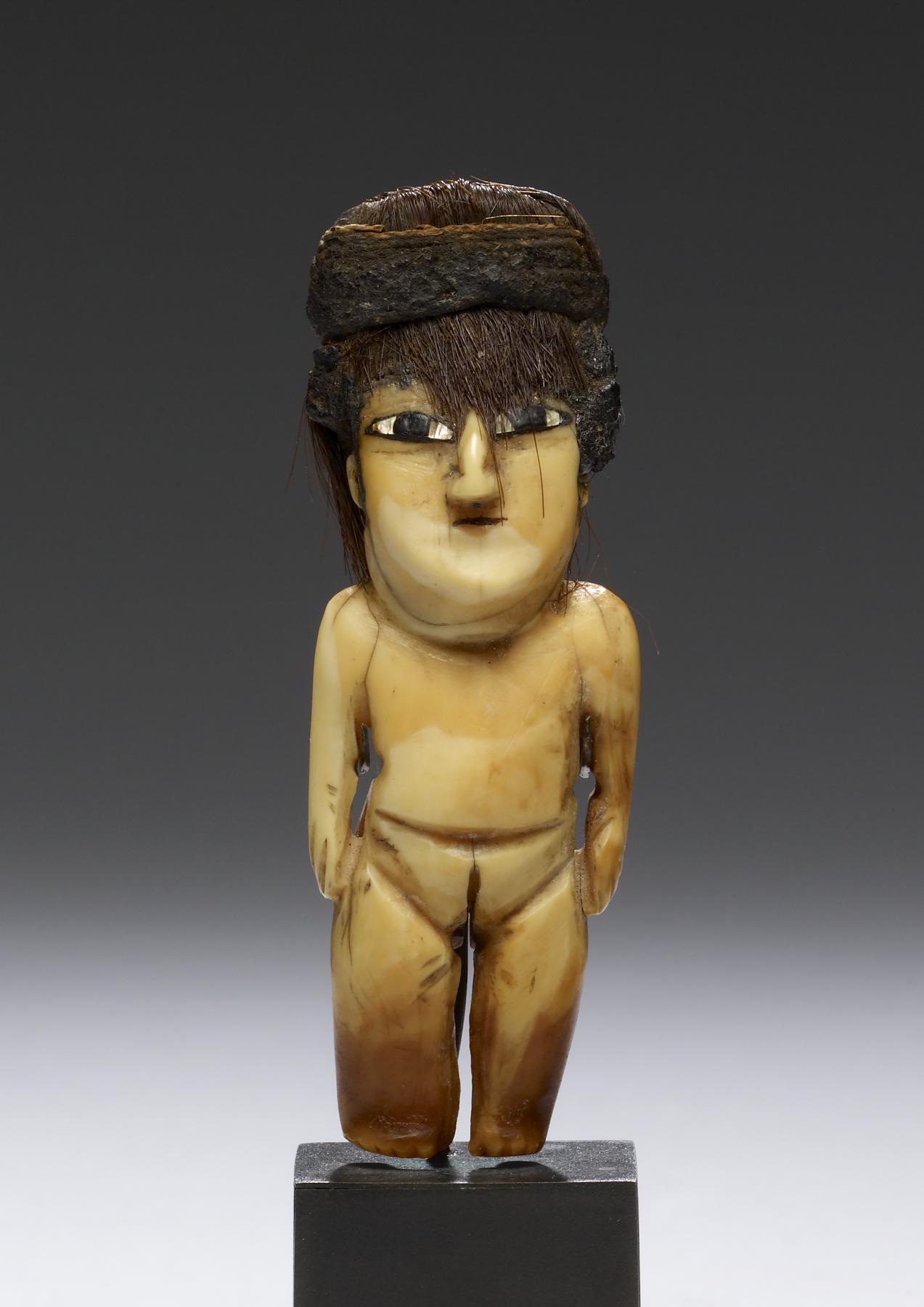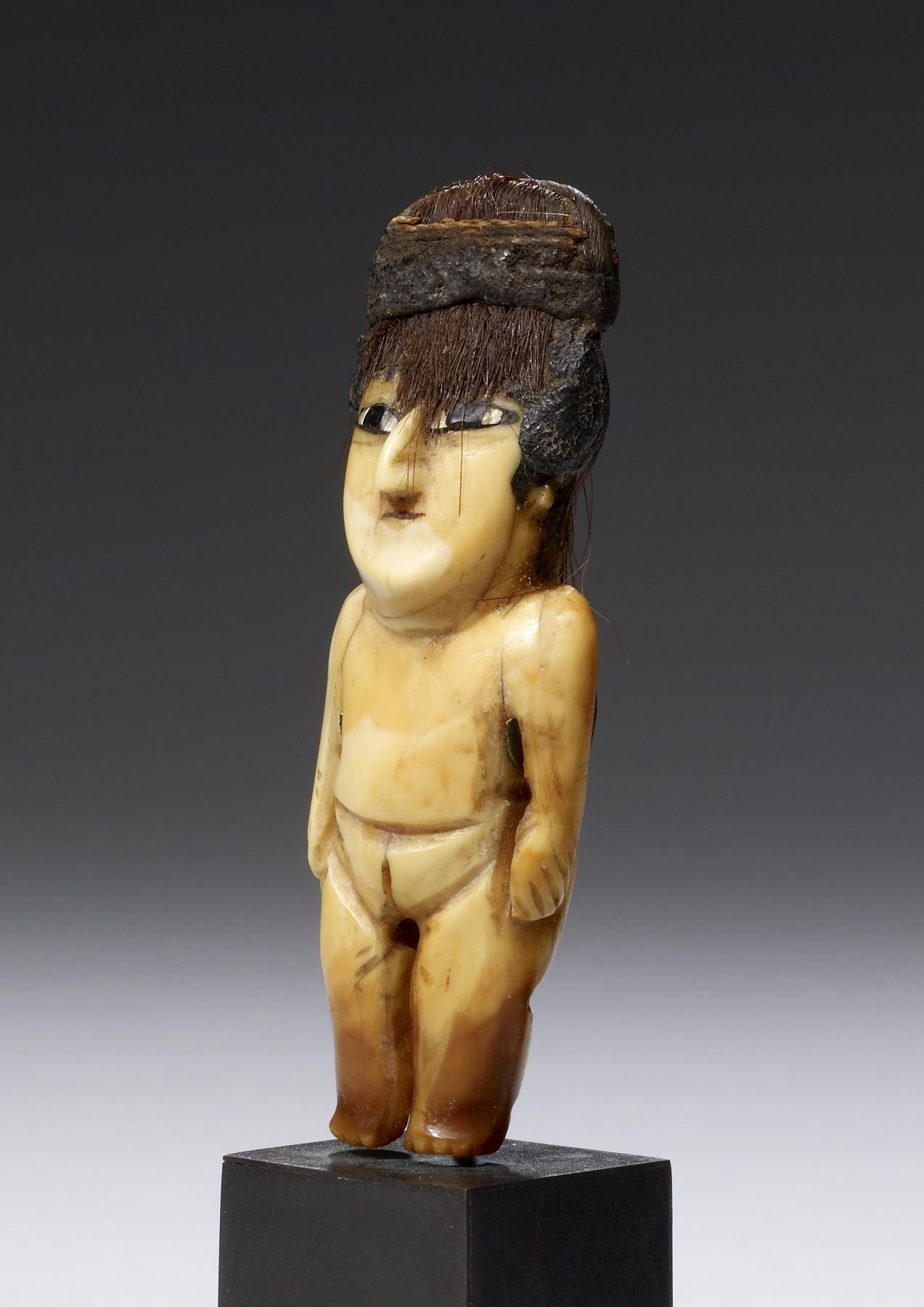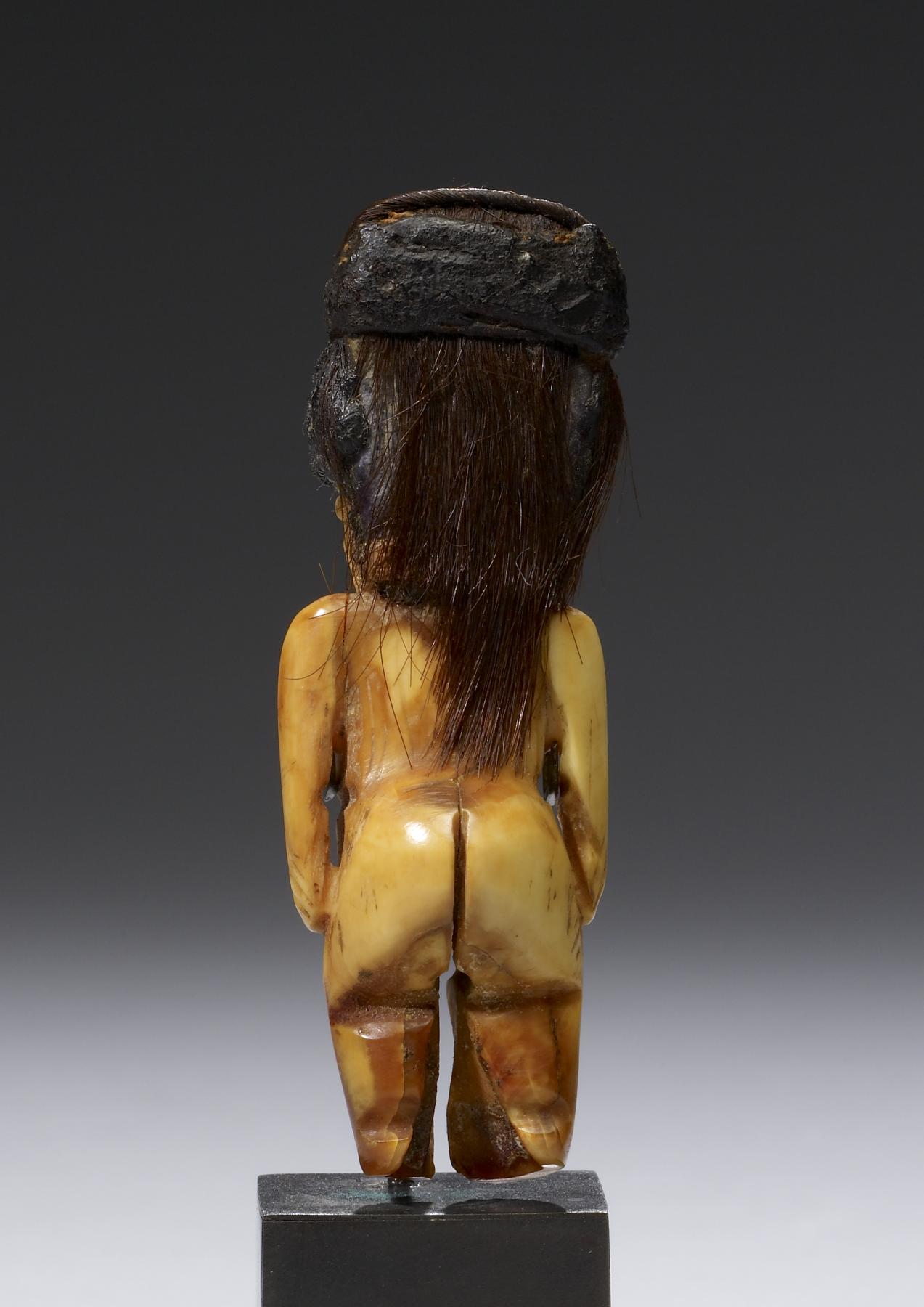Female Effigy Figure
(Ancient Americas )
Andean civilization is renowned for spectacular textiles that were at the heart of social politics and economics from earliest times. The fiber arts permeated all facets of daily existence, from clothing to protect the body to bridges spanning treacherous gorges. The form, materials, quality, and decorative imagery on clothing conveyed a person's social status or political affiliation and even recounted his or her specific accomplishments on behalf of the state. This female figure originally was dressed in clothing appropriate to her meaning as an offering - perhaps a building dedication cache or ritual deposit at a huaca, a sacred location where divine forces are concentrated. Coastal Andean peoples were keen observers of the vast ocean world. The Nazca, in particular, relied heavily on marine resources for food and materials for a variety of uses, such as the whale tooth from which this captivating lady was carved. The salty ocean and its unusual creatures constituted a dyadic opposition to the earth with its fresh waters. The carving of a ritual figurine from the tooth of a gigantic marine creature certainly carried extra spiritual significance.
The authenticity of this figurine is now in question. Though the materials used are in keeping with those used by the ancient Nazca, recent discussions with scholars in the field in both United States and in Peru suggest that this type of figurine is not part of the known iconographic repertoire of the Nazca peoples of ancient Peru.
Provenance
Provenance (from the French provenir, 'to come from/forth') is the chronology of the ownership, custody, or location of a historical object.
Throckmorton Fine Arts, New York [date and mode of acquisition unknown]; John G. Bourne, 1990s, by purchase; Walters Art Museum, 2009, by gift.
Exhibitions
| 2012-2013 | Exploring Art of the Ancient Americas: The John Bourne Collection Gift. The Walters Art Museum, Baltimore; Frist Center for the Visual Arts, Nashville. |
| 1998-2008 | Art of Ancient America, 1500 B.C.-1400 A.D.. Museum of New Mexico, Santa Fe. |
Geographies
Peru, South Coast (Place of Origin)
Measurements
H: 3 x W: 1 1/16 x D: 15/16 in. (7.62 x 2.7 x 2.38 cm)
Credit Line
Gift of John Bourne, 2009
Location in Museum
Not on view
Accession Number
In libraries, galleries, museums, and archives, an accession number is a unique identifier assigned to each object in the collection.
In libraries, galleries, museums, and archives, an accession number is a unique identifier assigned to each object in the collection.
2009.20.7






